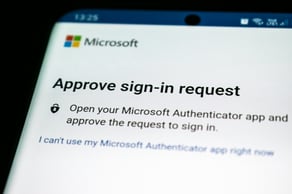Security training for employees: Building real awareness

Investing in security training isn’t just about meeting compliance requirements — it’s about protecting your organization’s most valuable and vulnerable asset: its people. In a digital world where threats evolve constantly, a once-a-year e-learning course is no longer enough. Effective training must be relevant, engaging, tailored, and continuous.
Here are the key principles and methods that lead to real awareness — and safer behavior — in practice.
5 principles for effective security training
1. Relevant and realistic
Training should reflect the actual threats employees face. That means using examples from real phishing emails, digital fraud cases, and weaknesses in everyday tools. This creates recognition and builds situational understanding.
Example: An HR employee is trained on how attackers request payroll information. A finance team member is shown what a fake urgent payment request from a “CEO” actually looks like.
2. Frequent and accessible
Long-term learning requires repetition. Microlearning in short 2–5 minute sessions leads to higher completion rates and less disruption in busy workdays. When training is delivered regularly and directly in the tools employees already use, participation and impact improve.
Example: A weekly email with a micro-lesson on a timely topic, e.g., “Can you spot a fake Teams invitation?”
3. Role-specific content
One-size-fits-all rarely works. A manager, developer, and customer service rep face different risks and use digital tools differently. Segmenting content by role, access level or risk profile provides more relevant learning and better engagement.
Example: IT staff learn how credentials can leak on GitHub, while marketing teams focus on social engineering via tools like Canva or Google Drive.
4. Building habits, not just knowledge
Effective training changes behavior — not just transmits information. Employees must learn to act correctly by instinct. That requires practice, not just theory. Phishing simulations and scenario-based exercises offer a safe space to build those instincts.
Example: An employee clicks on a simulated phishing link and gets instant feedback: “This should have raised red flags. Watch for these signs next time.”
5. Rooted in culture and daily practice
Security training should align with company values and routines. When training is embedded in practice, and security is visibly prioritized by leadership, it reinforces credibility and impact.
Example: New hires not only complete training but sign IT policies and receive annual refreshers as part of the HR process.
Key methods for cybersecurity training
Microlearning
Short 2–5 minute lessons, each focused on a single topic. Adaptive learning adjusts difficulty based on previous answers.
Phishing simulations
Automated emails mimic real scams. If users click, they receive on-the-spot training. Over time, this builds instinct.
Interactive scenarios
“What would you do?” modules with choices and consequences. These deliver deeper learning than passive videos.
Gamification
Points, badges, and progress tracking make training more engaging. Successfully used in platforms like HoxHunt and Ninjio.
Automated repetition
The system revisits concepts users have misunderstood or forgotten. Reinforces habits and reduces risk of forgetting.
Reporting and risk insight
Dashboards reveal where risk is highest. Who clicks most? Where are interventions needed? Supports strategy and documentation.
Examples of holistic solutions
Solutions like Arctic Wolf, Nimblr, Junglemap, KnowBe4, and Proofpoint combine many of these methods and principles. They provide everything from microlearning and phishing simulations to role-based content, risk reporting, and strategic support.
From security measures to culture
Security training isn’t a one-off measure. It’s part of building a safer digital organization. When delivered with frequency, relevance, and engagement, training becomes more than knowledge. It becomes habit. Culture. Strength.
Need assistance with security training in your company?
Explore more

Attack Conference 2025: Real threats and new regulations require action

Six steps that can save Norway from the next cyberattack

Three days to attack: Why vulnerabilities must be closed faster

